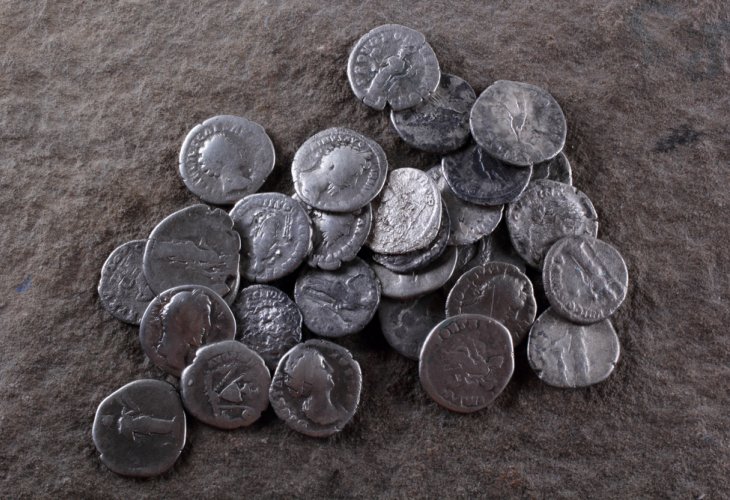Unearthing History: Rare Coins from Ancient Jewish Revolts Found in Benjamin
Rare coins from the Jewish revolt against the Romans, during the fall of the Second Temple, have been discovered in Benjamin. The coins are inscribed with "Freedom of Zion" and "For the Freedom of Jerusalem."
 (Illustrative photo: shutterstock)
(Illustrative photo: shutterstock)Recently, rare coins shedding light on Jewish history have been discovered during an archaeological survey in the area of Wadi Rashash in eastern Benjamin.
One of the coins from the time of the Great Revolt was found on the surface at the ruins of Givat near the Shiloh settlements, and another coin, from the Bar Kokhba revolt, was found in a cave in the cliffs of nearby Wadi Rashash, about a kilometer north.
The coin from the ruins of Givat was minted around the year 67 CE and features on one side a grape leaf with the Hebrew inscription "Freedom of Zion," and on the other side a cup with the inscription "Year Two."
The coin from Wadi Rashash was minted between 134-135 CE and depicts on one side a lulav surrounded by a wreath with the inscription "For the Freedom of Jerusalem," and on the other side, a musical instrument, likely a lyre, and the name "Shimon," referring to the revolt leader Shimon Ben Kosva, better known as Bar Kokhba.
The symbols and slogans on the Jewish coins from both Roman wars declared the rebels' goals: political freedom, liberation of Jerusalem from Roman oppressors, and the renewal of worship at the Temple.
The coin from the ruins of Givat adds to other findings from the Second Temple period and the Roman revolts discovered at the site, including ritual baths, a hiding system, stone vessels, and burial caves, all belonging to a Jewish settlement that existed there until the Bar Kokhba revolt.
Alongside the coin from Wadi Rashash, many pottery shards were discovered, brought into the cave by Jewish refugees during the Bar Kokhba revolt. This cave joins dozens of natural caves used by the rebels in the Judean Desert region and the surrounding rural areas of Judea.
The coins were found during an archaeological survey conducted by the Institute of Archaeology at Bar-Ilan University, led by Dr. Dvir Raviv.

